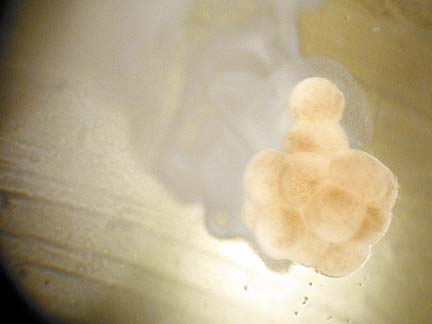
Travel Briefs
By Star-Bulletin Staff
[ ISLAND HOPPING ]
COURTESY OF THE MAUI OCEAN CENTER
Rice coral, Montipora capitata, is on display in the Maui Ocean Center's Surge Zone, where it is predicted to spawn on the evenings of July 31 and Aug. 1.
This show is rated R
We're telling you early because no one should miss out on "Sex and the Sea Week" at Maui Ocean Center July 28 through Aug. 1, when visitors will be given unique insight into what goes on "between the reefs" when supposedly, no one is watching.
Aquarium guests will learn what happens when there aren't enough males in certain fish species, how baby sharks are made, and may witness how sedentary animals, such as corals and sea anemones, are able mate without moving.
From 7 to 9:30 p.m. July 31 and Aug. 1, the center is hosting its 3rd annual Spawning Spectacle, the one time annually when rice coral spawn. During the spawning, all of the polyps (the tiny, cylindrical animals) simultaneously release bundles containing eggs and sperm, which are visible to the naked eye. The bundles float to the surface, and after 20 minutes to an hour, clouds of sperm are released.
After fertilization, eggs become free-swimming larvae called planulae. Though most planulae do not survive this phase, some will settle on a hard surface and establish a whole new colony.
Admission to the rare spectacle is $20 for adults and $15 for children ($15/$12.50 for members) and includes cuisine served in the Living Reef Building. The Maui Ocean Center is at 192 Ma'alaea Road. For more information, call (808) 270-7000 or visit www.mauioceancenter.com.
Star-Bulletin staff
COURTESY OF THE MAUI OCEAN CENTER
It's easy to see how the coral got it's name when it is viewed up close, as shown below.
COURTESY OF THE MAUI OCEAN CENTER
This male crust coral, Leptastrea purpurea, spawned recently, sending clouds of sperm into the Maui Ocean Center's Moray Eel Exhibit.
COURTESY OF THE MAUI OCEAN CENTER
Rice coral is hermaphroditic; it releases bundles, which contain an egg surrounded by sperm. When rice coral spawns, the bundles float to the surface, and after 20 to 60 minutes, the bundles break up and the sperm is distributed into the water.



